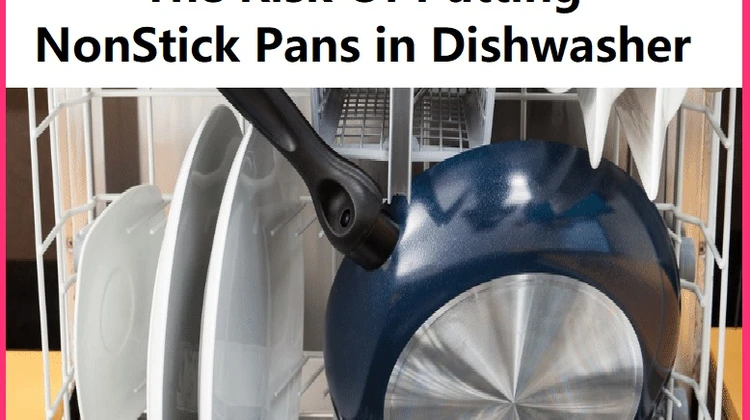Disclaimer: As an Amazon Associate, I earn commission from qualifying purchases.
Nonstick pans have become a staple in modern kitchens due to their convenience and ease of use. These pans are coated with a layer of polytetrafluoroethylene (PTFE), commonly known as Teflon, or other similar materials. This coating prevents food from sticking to the surface, making cooking and cleaning much easier. The popularity of nonstick pans can be attributed to their ability to reduce the need for excessive oil, making them a healthier option for cooking.
The Impact of Dishwashers on Nonstick Pans
Dishwashers use a combination of high temperatures and strong detergents to clean dishes effectively. While this method is efficient for most kitchenware, it can be detrimental to nonstick pans. The high temperatures and harsh chemicals in dishwasher detergents can cause the nonstick coating to degrade over time. This degradation can lead to the coating peeling or flaking off, rendering the pan less effective and potentially releasing harmful particles into your food.
Manufacturer Recommendations
Most nonstick pan manufacturers recommend hand washing to preserve the integrity of the nonstick coating. Brands like T-fal, Calphalon, and All-Clad explicitly advise against using dishwashers for their nonstick products. These guidelines are based on extensive testing and research to ensure the longevity and safety of their cookware.
Hand Washing Nonstick Pans: Best Practices
Hand washing is the preferred method for cleaning nonstick pans. Use a soft sponge or non-abrasive cloth with mild dish soap and warm water. Avoid using steel wool or scouring pads, as they can scratch the nonstick surface. Rinse thoroughly and dry immediately to prevent water spots.
Common Mistakes When Cleaning Nonstick Pans
One of the most common mistakes is using abrasive materials like steel wool or harsh cleaning agents. These can damage the nonstick coating, leading to premature wear and tear. Another mistake is soaking the pan in water for extended periods, which can cause the coating to peel.
Alternative Cleaning Methods for Nonstick Pans
For tough stains, you can use a mixture of baking soda and water. Apply the paste to the affected area and let it sit for a few minutes before gently scrubbing with a non-abrasive sponge. Vinegar can also be used to remove stubborn residue. Fill the pan with a mixture of water and vinegar, bring it to a boil, and then let it cool before washing as usual.
When to Consider Using a Dishwasher
In some cases, using a dishwasher might be acceptable. Certain high-quality nonstick pans are designed to be dishwasher-safe. Always check the manufacturer’s guidelines to see if your pan is suitable for dishwasher use. However, even if a pan is dishwasher-safe, hand washing is still recommended for longevity.
Pros and Cons of Dishwasher Use for Nonstick Pans
Pros:
* Convenience: Dishwashers save time and effort.
* Hygiene: Dishwashers can sterilize dishes more effectively than hand washing.
Cons:
* Coating Degradation: High temperatures and harsh detergents can damage the nonstick coating.
* Reduced Lifespan: Regular dishwasher use can shorten the lifespan of nonstick pans.
Maintaining Nonstick Pans for Longevity
Proper storage and usage are crucial for maintaining nonstick pans. Avoid stacking pans without protection, as this can scratch the surface. Use wooden or silicone utensils to prevent damage to the nonstick coating. Regularly inspect your pans for signs of wear and replace them if the coating becomes significantly damaged.
Product Recommendations for Nonstick Pan Care
- Bar Keeper’s Friend: A versatile cleaning powder that is gentle on nonstick surfaces.
- Dawn Dish Soap: A mild detergent that effectively cleans without damaging the coating.
- OXO Good Grips Non-Scratch Scrub Sponge: A soft sponge that is safe for nonstick cookware.
Case Studies: Real-Life Examples
Case Study 1:
A homeowner noticed the nonstick coating on their pan started to flake after frequent dishwasher use. They switched to hand washing and noticed a significant improvement in the pan’s condition.
Case Study 2:
Another user found that using baking soda and vinegar effectively removed burnt-on residue without damaging the nonstick surface.
FAQs
FAQ 1: Can all nonstick pans go in the dishwasher?
No, not all nonstick pans are dishwasher-safe. It is essential to check the manufacturer’s guidelines to determine if your pan can be cleaned in a dishwasher.
FAQ 2: What happens if I put my nonstick pan in the dishwasher?
Putting a nonstick pan in the dishwasher can degrade the nonstick coating due to high temperatures and harsh detergents, leading to peeling and flaking.
FAQ 3: How often should I clean my nonstick pan?
Nonstick pans should be cleaned after each use to maintain their performance and longevity. Regular cleaning prevents the buildup of residue that can damage the coating.
FAQ 4: Are there any eco-friendly ways to clean nonstick pans?
Yes, using a mixture of baking soda and water or vinegar and water are eco-friendly methods to clean nonstick pans effectively.
FAQ 5: How can I tell if my nonstick pan is dishwasher-safe?
Check the manufacturer’s guidelines or look for a dishwasher-safe symbol on the pan. If unsure, it is best to hand wash the pan to preserve the nonstick coating.
Conclusion
Proper care for nonstick pans is essential to extend their lifespan and maintain their functionality. While dishwashers offer convenience, hand washing is generally the best method to preserve the nonstick coating. By following manufacturer recommendations and using gentle cleaning methods, you can ensure your nonstick pans remain in optimal condition for years to come. Always prioritize the longevity and safety of your cookware to enjoy hassle-free cooking experiences.







